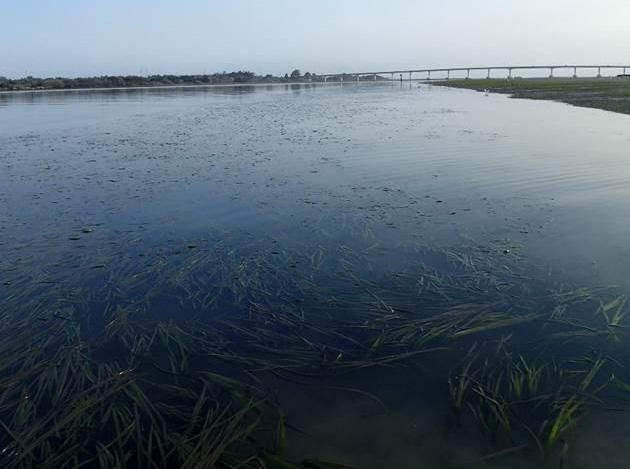
Cambria, Calif. (September 13, 2017) – In a move that underscores Humboldt Bay’s importance for wildlife and recreation, the California Coastal Commission today approved a slightly scaled-down proposal for Coast Seafoods’ continued oyster farming operations. The plan calls for a reduction of current operations from 300 acres to 279 acres, with consolidations in certain areas to protect valuable habitat.
“The Coastal Commission showed today that it understands the importance of Humboldt Bay’s natural resources, and is willing to protect them,” said Anna Weinstein, marine program director for Audubon California. “We know that the existing 300-acre shellfish farm in Humboldt Bay has severely damaged bird habitat, eelgrass, and Pacific herring, and a larger project would have dramatically worsened these impacts on birds and other wildlife, far beyond Humboldt Bay.”
In March, Audubon California and California Waterfowl Association sued the Humboldt Bay Harbor District for approving a faulty environmental impact report on a 490-acre Coast Seafoods project. Today’s decision follows the Coastal Commission’s rejection in June of an earlier Coast Seafoods proposal that would have expanded the company’s operations in Humboldt Bay from 300 to 423 acres, most of it in publicly-owned eelgrass beds and tidal mudflats.
The Commission‘s action is consistent with the fact that no other oyster farming operation in the state is allowed to encroach on eelgrass, a threatened marine habitat that is necessary to maintain the coastal food web because it serves as a spawning and nursery site for Pacific herring, salmon, rockfish, Dungeness crab, and other sea life. The Commission also was concerned about the fate of the Pacific Black Brant, a sea goose that migrates for thousands of miles and whose population depends heavily on the eelgrass beds of Humboldt Bay. Finally, the Commission was concerned about continued impacts to recreational access and safety, particularly, non-motorized vessels.
The Commission’s decision comes after months of public outcry about the project. The project has spawned hundreds of comment letters and protests from environmental advocates, local hunters, state and federal wildlife agencies, environmental organizations, and the local Wiyot tribe.
Humboldt Bay is a vital stop for birds along the Pacific Flyway. In spring migration alone, it hosts 100,000 or more shorebirds each day and tens of thousands of waterbirds. It hosts extraordinarily large percentages of many populations of shorebirds and waterfowl, including approximately:
- Up to 60% of all migrating Black Brant
- 23% of all migrating and overwintering Western Sandpiper
- 44% of all migrating and overwintering Dunlin (Pacifica subspecies)
A key driver of this bird activity is Humboldt Bay’s eelgrass, a rare type of habitat that is invaluable as a food resource for birds, as well as the fish and crustaceans that birds eat. Eelgrass is on the decline in much of California, and about half of the state’s remaining eelgrass is in Humboldt Bay. Eelgrass is also vital to the bay’s herring population, which will lose spawning ground to this project.
“There are places in Humboldt Bay where oyster farming can thrive without unnecessary impacts on sensitive habitats and wildlife,” Weinstein said. “This is all about balancing the needs of industry with wildlife, hunters, recreational boaters, and others that use this beautiful bay.”



